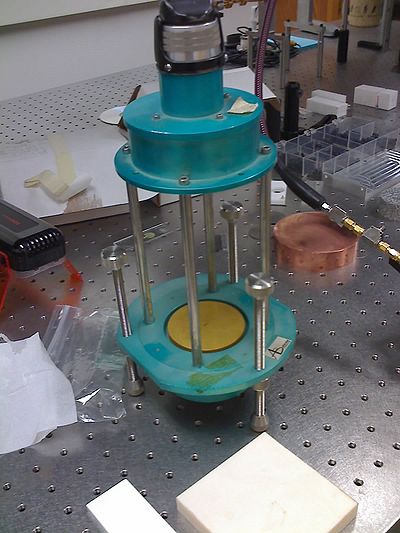- Hydrogen from Hyperphysics
- H spectrum flash simulation
- Spontaneous emission. Why does an electron in an excited state decay at all? The theory we've presented so far explicitly prohibits this since stationary states are, well, stationary. This is the realm of Quantum Electrodynamics (QED). Spontaneous emission in free space depends on vacuum fluctuations.
- Thinking about laser line width. Remember:
 , But be careful in thinking about this formula. In nonrelativistic QM time is an independent variable. The dynamical variables are functions of it. Δt is not the standard deviation of our usual dynamical variables. In the time-energy uncertainty relation is corresponds to the amount of time it takes for the energy to change by one standard deviation. (See footnote 23 on page 116 of the book).
, But be careful in thinking about this formula. In nonrelativistic QM time is an independent variable. The dynamical variables are functions of it. Δt is not the standard deviation of our usual dynamical variables. In the time-energy uncertainty relation is corresponds to the amount of time it takes for the energy to change by one standard deviation. (See footnote 23 on page 116 of the book).
- External frequency stabilization of CW oscillators (lasers, microwaves, etc). The higher the Q of a cavity resonator, the longer a photon stays in the cavity.
- An example of doing atomic spectroscopy with a stabilized laser. See Figure 3 in particular.
- Suppose you want a resolution of 200 MHz at 800 nm wavelength. The Q of this measurement corresponds to a certain Δf, which in turn gives a certain ΔE. Use this and the time/energy uncertainty relation to estimate the lifetime of the excited states.
- An exercise for you. Using Mathematica, trial/error, or whatever techniques you like, figure out the eigenvalues of the Laplacian.
Here's a millimeter wave cavity:

angular momentum
 , But be careful in thinking about this formula. In nonrelativistic QM time is an independent variable. The dynamical variables are functions of it. Δt is not the standard deviation of our usual dynamical variables. In the time-energy uncertainty relation is corresponds to the amount of time it takes for the energy to change by one standard deviation. (See footnote 23 on page 116 of the book).
, But be careful in thinking about this formula. In nonrelativistic QM time is an independent variable. The dynamical variables are functions of it. Δt is not the standard deviation of our usual dynamical variables. In the time-energy uncertainty relation is corresponds to the amount of time it takes for the energy to change by one standard deviation. (See footnote 23 on page 116 of the book).
